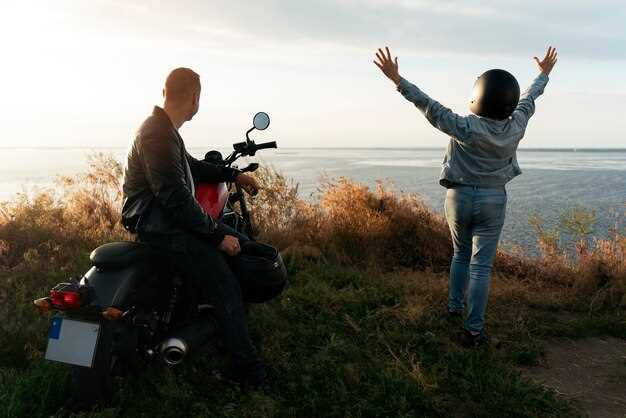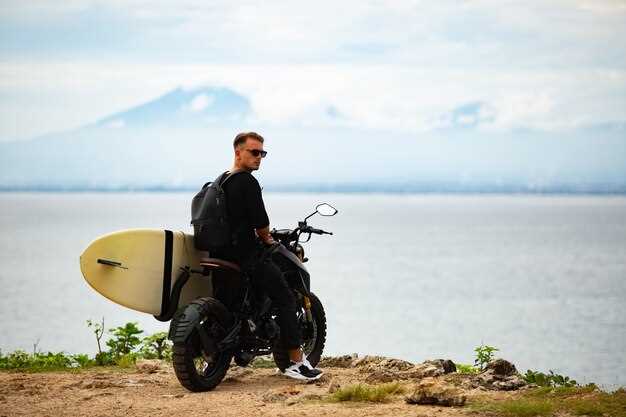

Embarking on a cross-country motorcycle trip is an exhilarating adventure that demands careful planning and organization, especially when it comes to packing. The open road offers freedom and exploration, but the limited space and unique challenges of motorcycle travel require specific strategies to ensure you have everything you need without overloading your bike.
Understanding the essentials of packing efficiently can significantly enhance your journey. Prioritizing lightweight tools, durable clothing, and necessary gear will help you travel comfortably and safely. Remember, the right packing techniques not only optimize space but also ensure that your items are easily accessible when you need them the most.
Throughout this guide, we will discuss key packing strategies, how to choose the right gear, and tips on reducing bulk while maintaining functionality. With the right preparation, you’ll be ready to hit the road and embrace the adventure ahead with confidence.
Choosing the Right Luggage Solutions for Your Bike

When planning a cross country motorcycle trip, selecting the appropriate luggage is crucial for both functionality and safety. The right luggage solutions can significantly enhance your riding experience, ensuring that all essential items are securely stored while maintaining balance on your bike.
1. Consider the Type of Motorcycle: Different bikes have varying weight distributions and frame designs. Sportbikes may require more streamlined options, such as tail bags or tank bags, while adventure bikes can accommodate larger panniers. Always choose luggage that complements your motorcycle’s design and capabilities.
2. Types of Luggage: Common types of luggage include hard cases, soft bags, and tank bags. Hard cases offer superior protection and weather resistance, making them ideal for long journeys. Soft bags are lighter and more adaptable, often expanding to fit various loads. Tank bags provide easy access to smaller items, ideal for essentials like maps or snacks while riding.
3. Capacity and Weight: Assess the amount of gear you plan to bring and choose luggage that offers adequate capacity without exceeding your bike’s weight limit. Remember that heavier luggage can affect handling and reduce fuel efficiency. Opt for lightweight materials and designs.
4. Waterproofing: Weather can be unpredictable during long rides. It’s important to ensure your luggage is waterproof or comes with rain covers. This will protect your belongings from water damage and keep them dry during unexpected showers.
5. Security Features: Invest in luggage with secure locking mechanisms to safeguard your items during stops. Look for features such as lockable zippers or integrated locks to deter theft in unfamiliar locations.
6. Installation and Removal: Your chosen luggage should be easy to install and remove. Quick-release systems or straps can save time during pit stops and allow you to remove bags for security in urban areas.
7. Additional Accessories: Consider investing in packing cubes or compression sacks to maximize space within your luggage. These can help organize your belongings efficiently and provide easy access to items without rummaging through your bags.
By carefully selecting the right luggage solutions for your motorcycle, you can enhance your overall experience on your cross country trip, ensuring that your belongings are protected, accessible, and well-organized.
Packing Techniques to Maximize Space and Balance

When embarking on a cross-country motorcycle trip, efficient packing is essential for comfort and safety. Here are some techniques to optimize space and maintain balance on your bike.
First, choose the right luggage system. Hard shells and soft bags each have their benefits. Hard cases offer durability and weather protection, while soft bags are often lighter and more flexible. Consider a combination to utilize both advantages. Ensure the luggage is securely fastened to prevent shifting during the ride.
Next, employ the principle of compression. Use compression bags for clothing and bedding to reduce volume. Roll clothes instead of folding them; this technique not only saves space but also minimizes wrinkles. Place heavier items near the bottom of the bags to lower the center of gravity, enhancing stability.
Organizational compartments can also be invaluable. Use packing cubes or zip-lock bags to categorize items like tools, toiletries, and electronics. This not only maximizes space but also allows for easy access without rummaging through your entire luggage.
Balance is crucial for motorcycle handling; distribute the weight evenly across your bike. Place heavier items on either side of the bike to avoid tipping over. Additionally, keep essential items, such as snacks, water, and a first-aid kit, in easily accessible pockets or compartments. This way, you won’t disturb your balanced load when you need something urgently.
Lastly, be mindful of your road attire. Wear lightweight, moisture-wicking clothes to save space in your bags. A good rule of thumb is to pack versatile items that can serve multiple purposes, such as a jacket that is both protective and can be worn casually off the bike. This reduces the total number of items packed while ensuring you have everything needed for varied situations.
Must-Have Gear and Tools for Long-Distance Riding
When embarking on a long-distance motorcycle trip, having the right gear and tools is essential for a safe and enjoyable journey. Here’s a detailed look at the must-have items you should consider packing.
1. Protective Gear: Invest in top-quality protective clothing including a durable riding jacket with armor, riding pants, gloves, and sturdy boots. These items will offer protection against weather elements and provide safety in case of an accident. Don’t forget a well-fitted helmet that complies with safety standards.
2. Motorcycle Maintenance Tools: Carry a basic tool kit that includes wrenches, screwdrivers, pliers, and tire repair tools. Additionally, a multi-tool can come in handy for adjustments and minor repairs on the road. A tire pressure gauge is also crucial for ensuring proper tire maintenance throughout your trip.
3. Navigation System: Whether you prefer GPS units or smartphone navigation apps, having a reliable navigation system is key. Ensure your device is mounted securely on your bike for easy access and visibility.
4. First Aid Kit: A compact first aid kit is a must-have for any long-distance trip. Include items such as band-aids, antiseptic wipes, and pain relievers. Familiarize yourself with basic first aid skills to address minor emergencies.
5. Weather Protection: Pack waterproof gear such as a poncho or rain suit, and consider a windproof jacket to shield against varying weather conditions. Proper gear will keep you comfortable and safe regardless of the elements you encounter.
6. Camping Gear: If you plan to make overnight stops, lightweight camping gear is essential. A compact tent, sleeping bag, and portable cooking equipment can enhance your camping experience and provide comfort on long rides.
7. Communication Tools: Having a reliable means of communication is important for safety and coordination. Consider a Bluetooth headset to stay connected with other riders or for hands-free calls during your trip.
8. Extra Fuel and Water Containers: Long stretches between gas stations can occur, especially in remote areas. Carry a collapsible fuel canister and a portable water container to ensure you stay hydrated and your bike stays fueled.
By prioritizing these essential items, you’ll be well-prepared to face the challenges of a cross-country motorcycle trip, making the experience not only safer but also more enjoyable.






